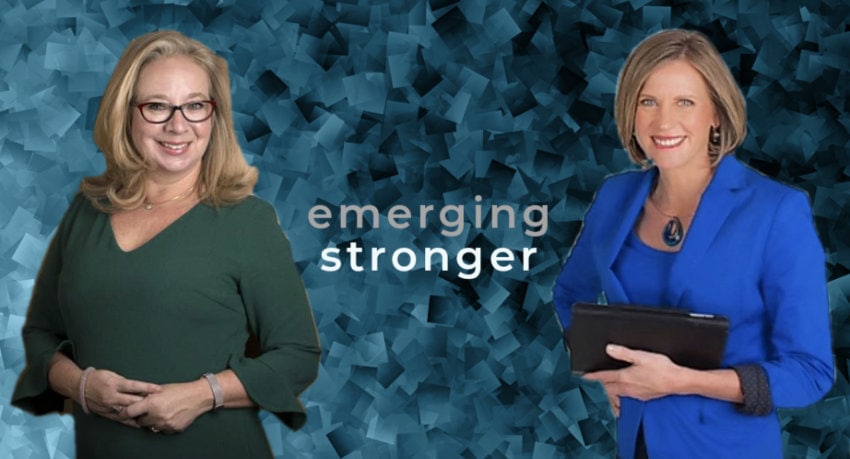The world is complex. We need tools to help us navigate this complexity. Mental models are an excellent tool to help achieve this.
Mental models are simplified representations of how the world works. What’s exciting about them is that they not only help us to understand, but they also help us to take action. Mental models allow us to access cross-domain knowledge and improve our decision-making, problem-solving, and planning skills.
Mental models appeared on my radar back in 2018 after working with Arun Pradhan on our From Order Taker to Performance Partner program. In late 2020 Arun and his colleague Shai Desai made it easier for us to use metal models when they launched Model Thinkers. They were my guests on a special Learning Uncut podcast professional development episode in January 2021 (Episode 70) to discuss mental models.
It was an absolute pleasure for Laura Overton and me to curate a mental model playbook for L&D. In an interview, we spoke with Arun about the models we use personally and explored how L&D can adopt them to be more relevant, impactful and deliver high value.
We believe so strongly in the power of mental models that we have incorporated several of them in our Emerging Stronger program for L&D Leaders. If you are navigating through the disruption caused by the pandemic mental models can support your thinking and search for new ways of seeing the world and working. The reality is we all have and use mental models. It’s more powerful when we do this consciously. Let’s look at some of the models I’ve found most useful.
Fast and Slow Thinking
This is one of my key ‘go to’ models – it’s flexible and applies to how people think and make decisions in all aspects of life, and across all domains.
It’s a foundational model in behavioural economics that will help inform your understanding of cognitive biases, behaviour change and humanity in general. Nobel Prize winner Daniel Kahneman’s mental model of Fast and Slow Thinking underpins behavioural economics by explaining how you live most of your life on automatic pilot, are essentially irrational, and prone to cognitive biases.
I’ve introduced this model to support L&D leaders to slow down thinking to explore a business challenge / opportunity before racing to a solution. I’m also using it in a program I’m running for Finance Business Partners to help them understand how the business leaders they support make decisions and identify ways they can support them to make better decisions.

Source: ModelThinkers.com
Value Proposition
A common challenge for L&D leaders is to create and demonstrate value. The Value Proposition Canvas helps you enquire about what value looks like to the person or group that you are providing a product or service to. It takes a customer-centric and business first perspective rather than racing to a learning solution that you then have to ‘sell’ or push to people.
I use this canvas when helping clients to develop their learning strategy. For example, after creating a persona for front line managers we look at what ‘jobs’ these managers are trying to get done, their pain points and what ‘gains’ (positive outcomes / wins / making life easier) look like to them. That guides you to then consider how learning can help them to reduce pain and increase positive outcomes. It helps you to identify what approaches and services you can provide that will be high value for them and make it easier for them to do what they need to in order to achieve their goals.

Source: ModelThinkers.com
Scientific Method
One of my big light bulb moments in 2020 came in my conversation with Trish Uhl in Episode 48 of Learning Uncut when she said “What if everything we do in L&D is a hypothesis because we are never sure if something is going to work out?”
Think about that for a moment … Imagine if we approached everything with the preconception that we don’t know the right answer. What if our mindset was that we didn’t need to have the ‘right answer’ immediately? Instead we frame our work as a series of hypotheses.
The Scientific Method is a systematic way of learning about the world and answering questions which involves establishing and testing a hypothesis through experimentation.
Applying this framework, instead of committing quickly to a ‘learning solution,’ research a problem or opportunity and develop an idea about what might work. Frame your idea as a hypothesis and test the idea by running quick experiments before over-committing to a “solution” that might not work. I’ve been digging deep on this alongside Laura Overton and Shannon Tipton in the Emerging Stronger program. You’ll be hearing more from us about running experiments in L&D.
Even framing the learning solutions we proceed to implement as a (bigger) hypothesis prompts us to improve how we evaluate them. it can shift us beyond ‘Did people like the solution?’ to ‘Did the solution have the impact we were trying to create?’

Source: ModelThinkers.com
The Power of Mental Models
Mental models have become an indispensable tool in my daily work. They help me think more flexibly, address challenges more effectively and work smarter both on my own and with others.Take a look at the playbook that Laura and I curated at ModelThinkers.com for more examples of the mental models we each find useful. Take a look at the site and sign up for their newsletter to receive a new model every week. Let me know what models you are using, and what they’ve helped you to do.


